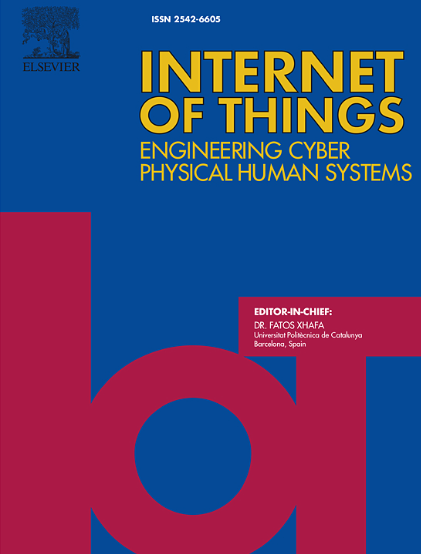车联网 (IoV) 边缘计算中基于模糊的任务卸载,适用于延迟敏感型应用
IF 6
3区 计算机科学
Q1 COMPUTER SCIENCE, INFORMATION SYSTEMS
引用次数: 0
摘要
随着车辆应用的不断发展,仅靠单个车辆的计算能力已不足以满足日益增长的需求。因此,将边缘计算集成到车联网(IoV)中成为一种重要的解决方案。由于车辆内部资源有限,通常需要将任务卸载到边缘节点。然而,IoV 环境中的任务卸载面临着一些挑战,包括高流动性、动态网络拓扑和不同的节点密度。传统的卸载方法无法有效应对这些挑战。此外,任务的重要性各不相同,因此边缘节点需要一种机制来根据任务的紧迫性确定优先级。为了克服这些挑战,我们提出了一种基于模糊逻辑的车对车(V2V)任务卸载方案。在这一方案中,模糊逻辑起着关键作用,它能根据任务的紧迫性和边缘节点的可用计算资源动态地确定任务的优先级,确保做出智能的、能感知上下文的决策。用户车辆通过边缘选择机制选择合适的边缘节点,以保证较长的连接时间和充足的计算资源。然后根据延迟要求组织边缘任务,并使用基于模糊规则的推理系统进行评估。我们的模拟结果表明,任务执行率得到了提高,整体系统延迟减少,排队延迟降到了最低。本文章由计算机程序翻译,如有差异,请以英文原文为准。
Fuzzy-based task offloading in Internet of Vehicles (IoV) edge computing for latency-sensitive applications
As vehicular applications continue to evolve, the computational capabilities of individual vehicles alone are no longer sufficient to meet the increasing demands. This has led to the integration of edge computing in the Internet of Vehicles (IoV) as an essential solution. Due to the limited resources within vehicles, there is often a need to offload tasks to edge nodes. However, task offloading in IoV environments presents several challenges, including high mobility, dynamic network topology, and varying node density. Traditional offloading methods fail to effectively address these challenges. Moreover, tasks differ in importance, necessitating a mechanism for edge nodes to prioritize tasks based on their urgency. To overcome these challenges, we propose a Vehicle-to-Vehicle (V2V) fuzzy-based task offloading scheme. In this scheme, fuzzy logic plays a critical role by enabling dynamic prioritization of tasks based on their urgency and the available computational resources at edge nodes, ensuring intelligent, context-aware decision-making. The user vehicle selects an appropriate edge node using an edge selection mechanism, which guarantees prolonged connection time and sufficient computational resources. Tasks at the edge are then organized based on their latency requirements and evaluated using a fuzzy rule-based inference system. Our simulation results demonstrate improved task execution rates, reduced overall system delay, and minimized queuing delays.
求助全文
通过发布文献求助,成功后即可免费获取论文全文。
去求助
来源期刊

Internet of Things
Multiple-
CiteScore
3.60
自引率
5.10%
发文量
115
审稿时长
37 days
期刊介绍:
Internet of Things; Engineering Cyber Physical Human Systems is a comprehensive journal encouraging cross collaboration between researchers, engineers and practitioners in the field of IoT & Cyber Physical Human Systems. The journal offers a unique platform to exchange scientific information on the entire breadth of technology, science, and societal applications of the IoT.
The journal will place a high priority on timely publication, and provide a home for high quality.
Furthermore, IOT is interested in publishing topical Special Issues on any aspect of IOT.
 求助内容:
求助内容: 应助结果提醒方式:
应助结果提醒方式:


